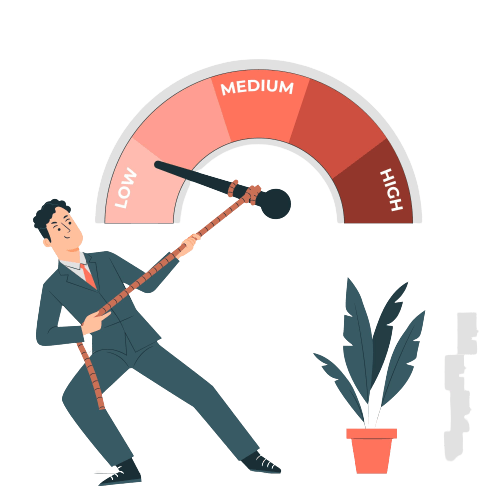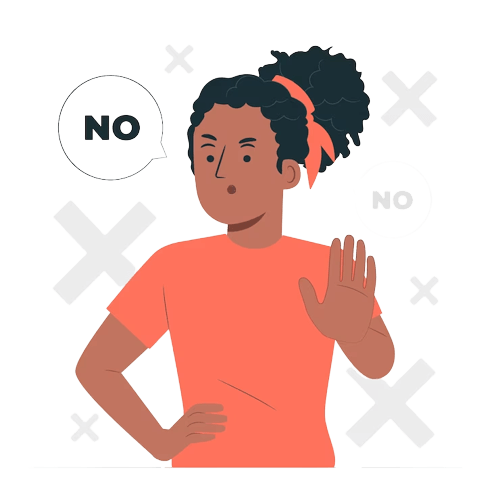Table of Content
- Importance of unique product descriptions
- What is duplicate content?
- The risk of duplicate Product descriptions
- Reasons for duplicate product descriptions
- How to identify duplicate Product descriptions
- Strategies to Avoid Duplicate Product Descriptions
- Best Practices for Writing Unique Product Descriptions
- Case Study: Successful Implementation of Unique Product Descriptions
- Tools and Resources for Creating Unique Product Descriptions
- Final thoughts
- FAQs
1. Importance of Unique product descriptions
Welcome to the ultimate guide for 2023 on how to avoid duplicate product descriptions. You’re about to embark on a journey that will transform your approach to product descriptions and, ultimately, your online business.
Why all the fuss about unique product descriptions? Imagine walking into a store where every product has the same report. It’s confusing. Individual product descriptions help your customers understand what makes each product unique and play a crucial role in your website’s search engine optimization (SEO).
Overview of blog post
In this guide, we’ll delve into the world of duplicate content, explore the risks associated with the same product descriptions, and provide you with strategies to create unique, engaging illustrations for your products.
2. What is Duplicate Content
So, what exactly is duplicate content? Duplicate content refers to substantial blocks of content that either completely match other content or are appreciably similar. It could be within a single website or across different domains.
How search engines view duplicate content
Search engines like Google are designed to provide the best possible experience for users, which means delivering unique and relevant content.
When encountering duplicate content, they face a dilemma: which version should they show in the search results? This confusion can lead to a less-than-optimal user experience so that search engines may rank sites with duplicate content lower.
The Impact of duplicate content on SEO
The impact of duplicate content on SEO is significant. It can dilute your site’s ranking power because search engines must know which version of the content to index. It can lead to your site losing visibility in search engine results, affecting traffic and conversions.
3. The Risks of Duplicate Product Descriptions

Duplicate product descriptions can lead to lower search engine rankings. For example, if you’re selling a blue cotton shirt and use the same description as another site, search engines may not know which site to rank higher.
Duplicate product descriptions can also lead to decreased website traffic. You’ll likely miss out on potential customers if your site doesn’t appear in the top search results because of the same content.
Lastly, duplicate product descriptions can lead to losing credibility and trust. Suppose a customer notices your product descriptions are similar to another site. In that case, they may question the authenticity of your site and choose to shop elsewhere.
4. Reasons for Duplicate Product Descriptions

Let’s delve into why duplicate product descriptions occur in the first place.
Use of manufacturer’s descriptions
One common reason is the use of manufacturer’s descriptions. It’s easy to copy and paste the manufacturer’s description, especially when you have hundreds or thousands of products. But remember, if you’re using the same descriptions as everyone else, you’re not standing out.
Multiple listings for the same product
Another reason is multiple listings for the same product. For instance, you might sell a t-shirt in different colors and list each as a product with the same description. While this might seem efficient, it can lead to duplicate content.
Lack of knowledge or resources
Lastly, lacking knowledge or resources can lead to duplicate product descriptions. Writing unique reports for each product takes time and expertise. Suppose you must know the importance of individual descriptions or need more resources to create them. In that case, you might end up with duplicate content.
5. How to Identify Duplicate Product Descriptions
How do you tell if you have duplicate product descriptions?
One way is to use SEO tools. Several tools, like SEMrush or Ahrefs, can scan your website for duplicate content.
You can also do manual checks. Pick a sentence from your product description and search for it in quotes on Google. If you see other websites with the same report, it’s a sign of duplication.
Another helpful tool is Google Search Console. It can alert you to duplicate meta descriptions and title tags, a sign of duplicate product descriptions.
6. Strategies to Avoid Duplicate Product Descriptions
Now that you know how to identify duplicate product descriptions, let’s look at how to avoid them.
First, focus on creating unique and engaging product descriptions. Highlight what makes each product unique. For example, instead of saying “blue cotton shirt,” you could say, “Our blue cotton shirt, with its soft fabric and tailored fit, offers comfort and style for any occasion.”
Another strategy is to use canonical tags. These tell search engines which version of a product description to consider as the “main” one when you have multiple similar products.
Lastly, consider implementing 301 redirects. A 301 redirect can guide search engines and users to a single, authoritative page if you have multiple pages with the same product.
By understanding the reasons behind duplicate product descriptions and implementing these strategies, you can improve your SEO, stand out from the competition, and provide a better customer experience.
7. Best Practices for Writing Unique Product Descriptions
Now that you have strategies to avoid duplicate product descriptions let’s dive into some best practices for writing unique product descriptions.
Firstly, understanding your audience is crucial. Who are you selling to? What are their needs, wants, and pain points? For example, if you sell eco-friendly products, your audience might be environmentally conscious consumers. Highlight how your products are sustainable and contribute to their green lifestyle.
Secondly, don’t just list features; highlight product benefits. If you’re selling a waterproof watch, don’t just say it’s waterproof. Please explain how the wearer can swim or get caught in the rain without worrying about damaging their look.
Next, use keywords strategically. Keywords help search engines understand what your product is about. But remember, don’t stuff your description with keywords. It should still be readable and engaging for your customers. For example, if you’re selling a “leather laptop bag,” use this phrase naturally in your description.
Lastly, incorporate storytelling. Stories engage people and make your products memorable. For example, instead of just selling a candle, sell an experience. “Our lavender-scented candle isn’t just a candle; it’s a ticket to a relaxing evening at home, with the soothing scent of lavender transporting you to serene fields of purple blooms.”
8. Case Study: Successful Implementation of Unique Product Descriptions
Let’s look at a real-life example of a company successfully implementing unique product descriptions.
Meet and Greet, a company that sells eco-friendly products. They faced a challenge familiar to many online retailers – duplicate product descriptions. They used the manufacturer’s descriptions, making content identical to many other websites.
Recognizing the issue, Green Earth decided to revamp its product descriptions. They started by understanding their audience – environmentally conscious consumers. They highlighted the benefits of their products, like how using their reusable water bottles reduces plastic waste. They used keywords strategically, focusing on terms like “eco-friendly,” “sustainable,” and “biodegradable.” And they incorporated storytelling, painting a picture of a greener world with each product.
The results? Green Earth saw a 30% increase in organic traffic and significantly improved search engine rankings. Their unique product descriptions set them apart and resonated with their customers.
Investing time and effort into creating unique product descriptions can yield significant results. So, start crafting your product descriptions today and watch your online business thrive!
9. Tools and Resources for Creating Unique Product Descriptions
Creating unique product descriptions may seem daunting, but don’t worry. There are plenty of tools and resources available to help you.
Firstly, SEO tools can be a great help. Tools like SEMrush or Yoast SEO can help you identify the keywords for your product descriptions. They can also help you optimize your descriptions for search engines, ensuring that they’re the right length and that your keywords are used effectively.
Next, consider using writing tools. Grammarly, for instance, can help you catch any grammar or spelling mistakes in your descriptions. Hemingway Editor is another excellent tool that can help you make your reports more readable by highlighting complex sentences and suggesting simpler alternatives.
Lastly, many e-commerce platforms offer resources to help you create unique product descriptions. For example, Shopify has a blog with plenty of articles and tips on writing product descriptions. WooCommerce also offers guides and tutorials on creating compelling product descriptions.
Remember, the key to creating unique product descriptions is to understand your audience, highlight the benefits of your products, use keywords strategically, and tell a story. With these tips and tools, you can create product descriptions that stand out and attract more customers to your online store.
10. Final thoughts
In conclusion, you’ve journeyed through the importance of unique product descriptions, understanding their pivotal role in enhancing SEO, distinguishing you from competitors, and enriching your customers’ experience.
You’ve learned to identify and avoid duplicate product descriptions, focusing on crafting descriptions that highlight the uniqueness of each product. You’ve also discovered the power of canonical tags and the utility of 301 redirects in managing similar products.
Now, it’s time to put these strategies into action. Remember, every product has a story, and it’s your job to tell it. So, breathe life into your product descriptions, and watch your e-commerce business flourish. You’ve got this!
11. FAQs
How do you prevent duplicate products?
Ensure each product has a unique identifier and description to prevent duplicate products. Regularly audit your inventory to spot and rectify any duplications.
How do I fix duplicate content in SEO?
Fixing duplicate content in SEO involves identifying the duplicate content, using methods like 301 redirects, canonical tags, or updating the content to make it unique.
What is a duplicate description in SEO?
A duplicate description in SEO refers to when two or more pages share the same meta description, which can negatively impact your site’s SEO performance.
How do I fix a duplicate URL?
To fix a duplicate URL, you can use a 301 redirect to guide users and search engines to the correct page or employ the canonical tag to indicate the preferred version of the page to search engines.

Leave a Reply